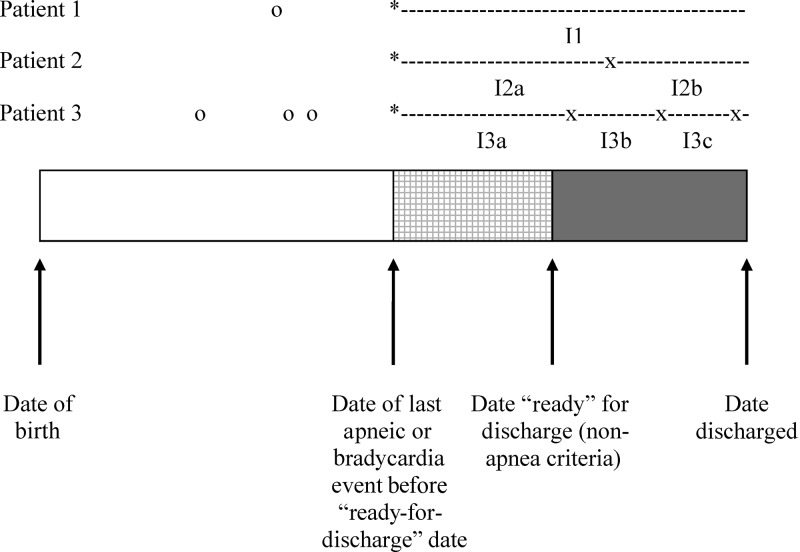FIGURE 1.
Inclusion criteria for the study project. The bar shows the course of a typical infant from birth (shown on the left-hand edge) through hospital discharge (shown on the right-hand edge). Arrows show important events for this project: the day of the last apnea or bradycardia event before the infant reached the ready-for-discharge date according to other criteria and the day when the infant was first ready for hospital discharge by other criteria. Three theoretical patients are shown above the solid line, and apnea or bradycardia events are shown to the right of the infant. Events shown as circles indicate events that occurred before the infant was ready for discharge according to other criteria and were not included in this study. Events shown as “X” indicate events that were included in the study because they occurred after the infant met other criteria for discharge. Patient 1 had the simplest course: the infant had no events after reaching the ready-for-discharge date. Patients 2 and 3 had events included in the study; the interval times are denoted by the “I2x” and “I3x” periods between events. The observation time began at the day of the last apnea or bradycardia event before the infant reached his or her individual ready-for-discharge date, denoted as the asterisk in the patient time lines.

